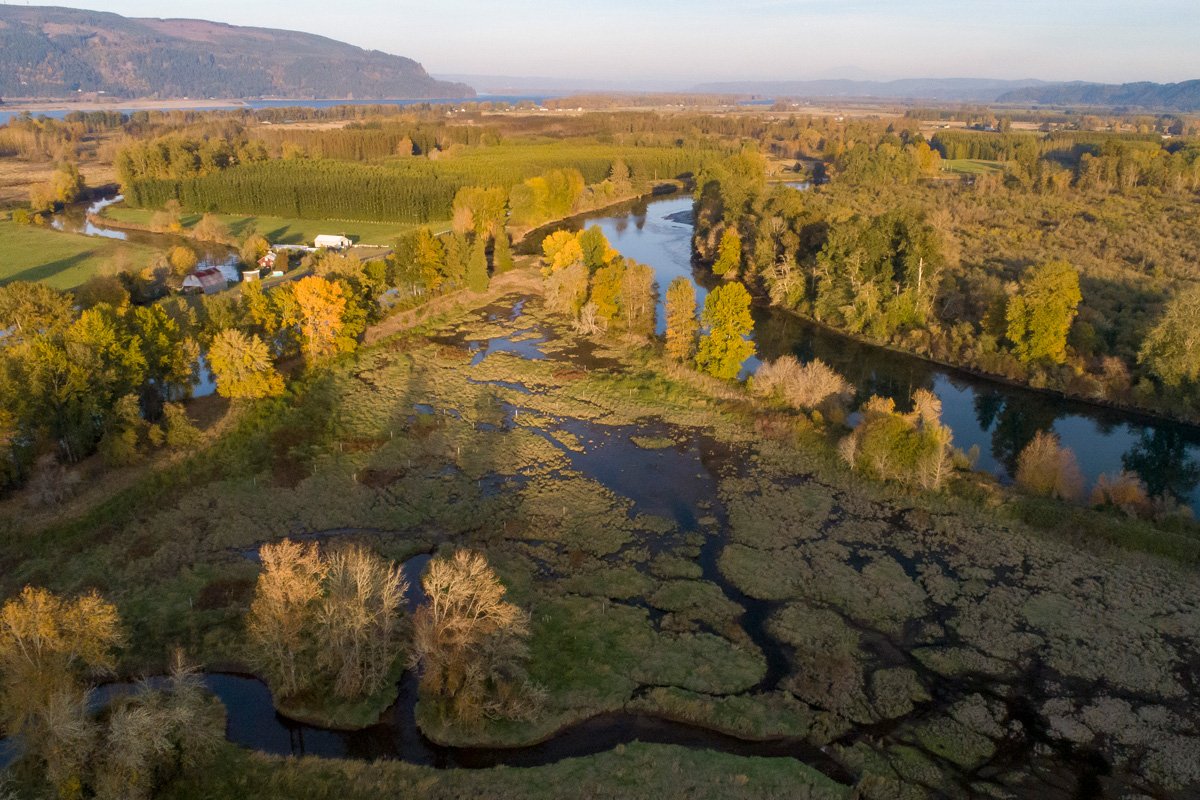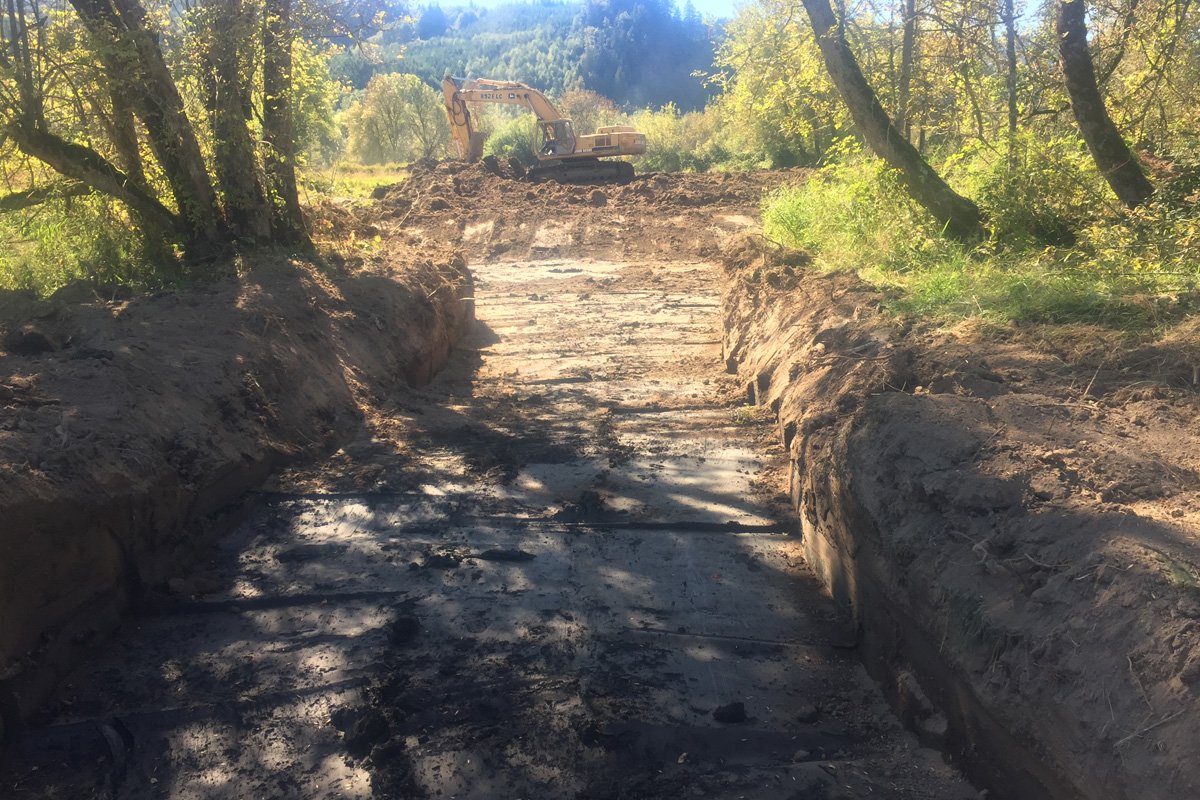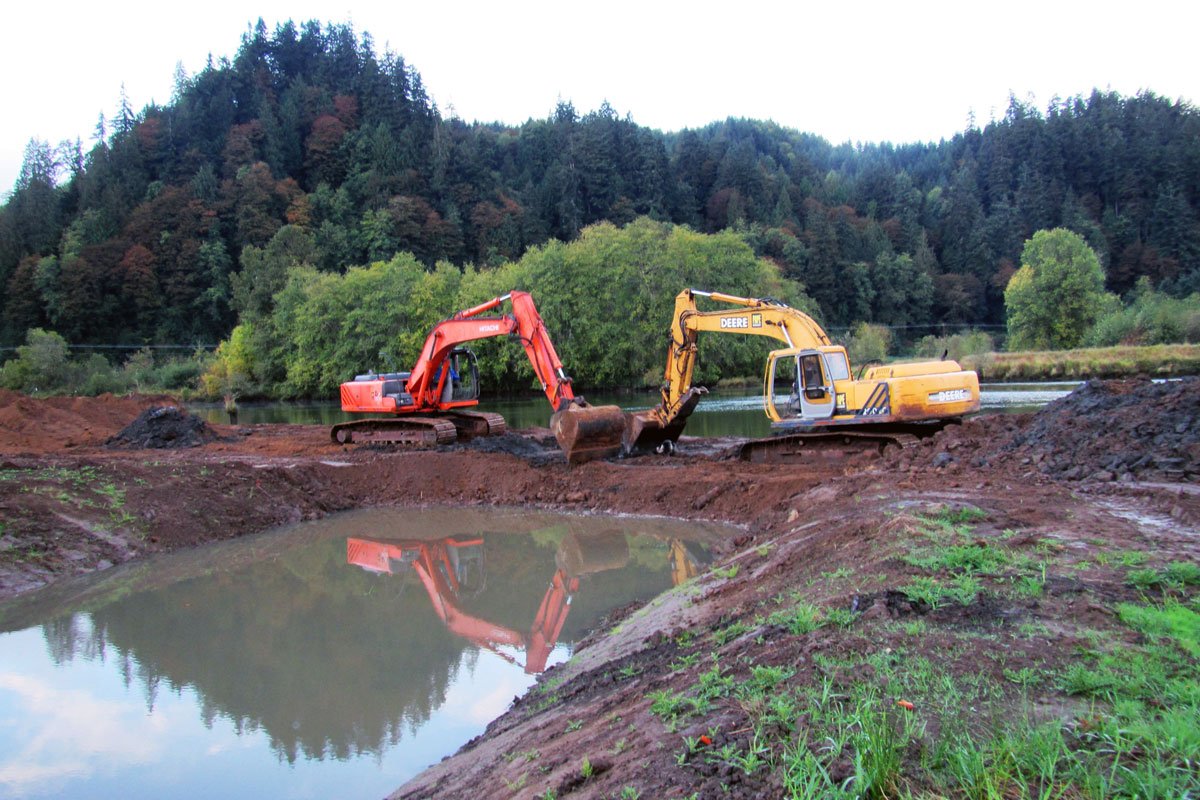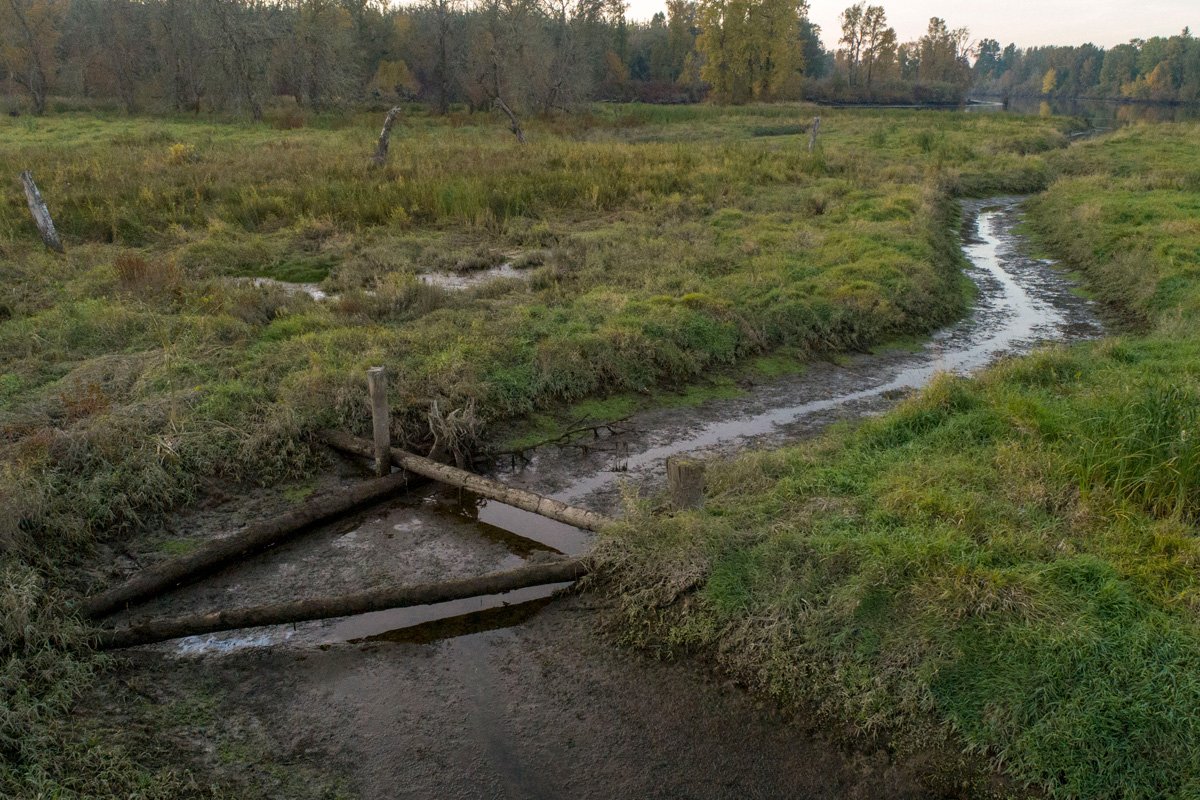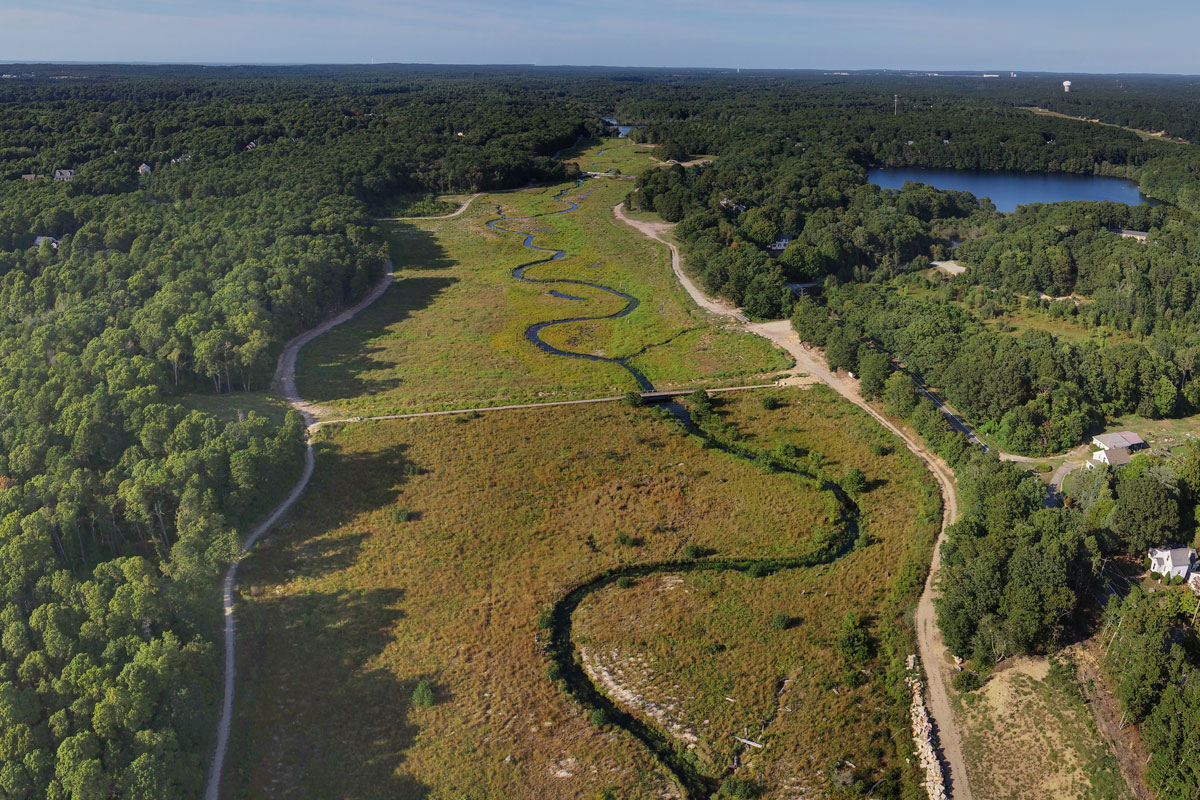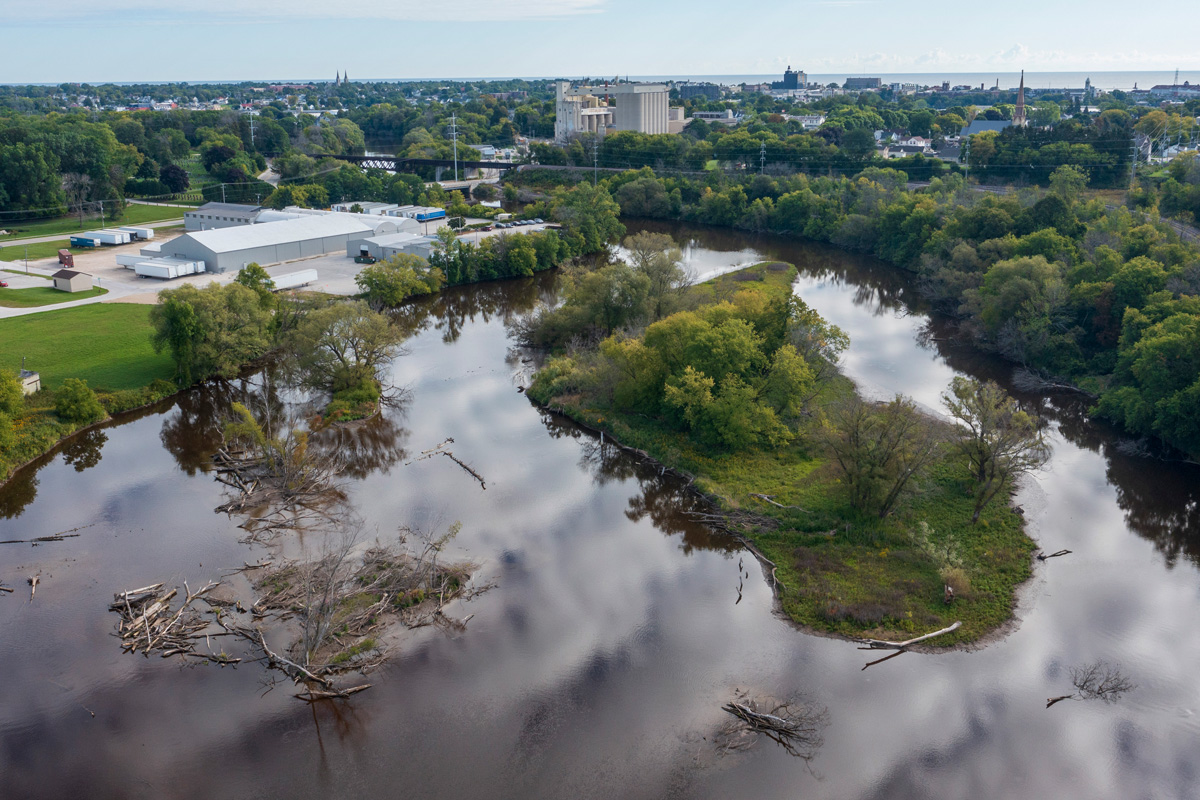Kerry Island & Westport Unit Restoration – Columbia River, OR
The Kerry Island & Westport Unit Restoration projects are two adjacent projects that both reconnect leveed floodplain habitat with Westport Slough, adjacent to the mainstem Columbia River. Both efforts involved levee breaching and removal, tidal channel creation, and revegetation to support salmon and steelhead habitat within the Columbia River Estuary. Because of different site histories, the pre-project conditions of the two areas were very different. Kerry Island had subsided about 4-6 feet lower than the Westport Unit as a result of being disconnected from tidal inundation and intensive agriculture use. The Westport Unit had less intensive use, and was open to tides, preventing similar subsidence from occurring. With breaching, Kerry Island is now functioning as low-marsh habitat with emergent plants and the Westport Unit is functioning as high-marsh habitat supporting trees and shrubs. Site evolution is currently being monitored.
Excavators dug channels throughout the island in the dry prior to breaching. Trees were left standing when possible to provide shade and eventually fish habitat after they fall. Channels were designed using nearby intact tidal floodplains at the Westport Unit as analogs for channel shape and sinuosity.
